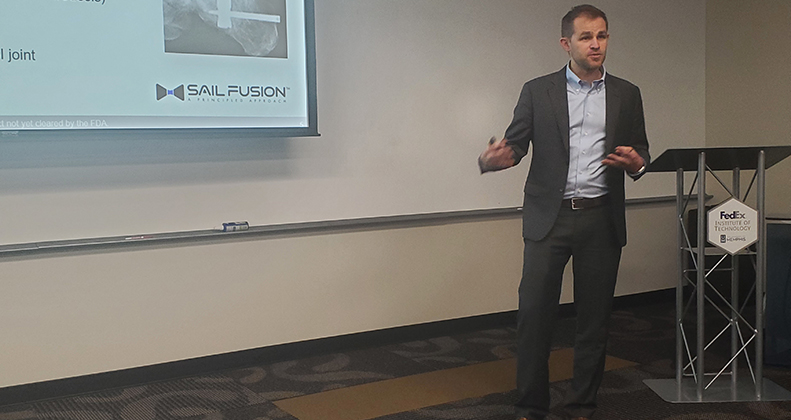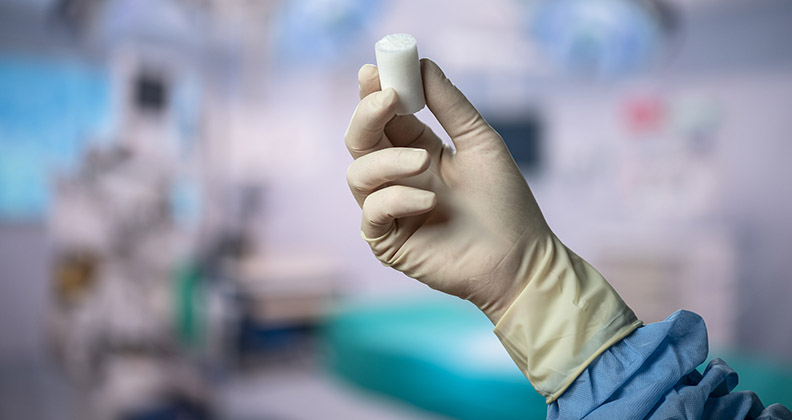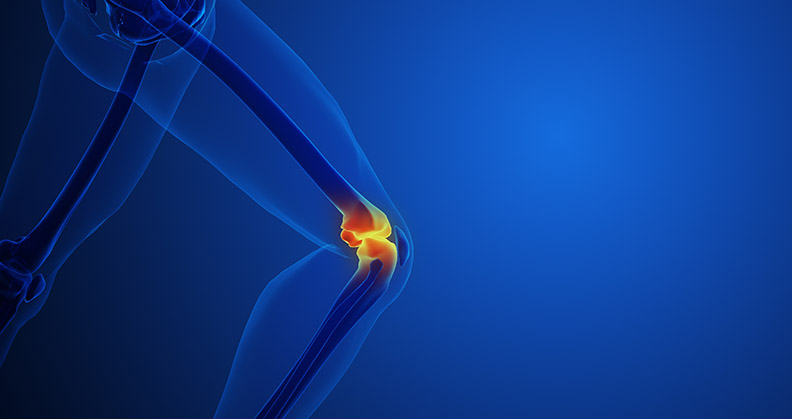
Startups, investors and business development experts met up in Memphis earlier this month for the 21st annual Musculoskeletal New Ventures Conference (MNVC). An all-time number of attendees saw a record 38 companies present for the first time and share the solutions they’re bringing to the joint replacement, sports medicine and spine markets.
It was a productive and informative meeting filled with new product introductions, numerous networking opportunities and plenty of local barbeque. Here are four innovative devices and treatments that have the potential to improve joint replacement and fusion and how well fractures are fixed.
SAIL Fusion (Spine)
SAIL Fusion’s BowTie Fusion System stabilizes the entire sacroiliac (SI) joint and resists motion in all planes. It’s reinforced by integrated multiplanar fixation and diverging and converging fixed-angle screws. A proprietary porous structure and roughened surface technology enhance osteointegration.
Unlike traditional SI fusion devices that utilize a lateral approach to the joint that is better suited for ankylosing trauma applications, BowTie employs an AO Foundation-inspired posterior-inferior surgical approach that enables robust fusion.
“It creates less tissue disruption, completely avoids major neurovascular structures, better prepares the joint by more thoroughly decorticating the auricular synovial surfaces and provides superior rigid fixation,” said David Jansen, President and CEO of SAIL Fusion. “These principles have been established by the AO Foundation as a result of decades of scientific research and clinical experience. SAIL Fusion is the first company to apply AO fusion principles to the SI joint.”
SAIL Fusion conducted market research that included interviews with more than 120 spine surgeons, 80% of whom expressed dissatisfaction with existing lateral SI systems. The surgeons said that conventional devices involve higher risk trajectories, exhibit inadequate implant anchorage in poor quality bone and have been shown to have a 15% to 20% complication rate. As a result, SAIL Fusion said 60% of the surgeons have avoided conducting SI fusions until an AO-based solution like BowTie became available.
Sail Fusion is currently awaiting FDA clearance for BowTie, and is preparing for commercial launch to capitalize on the estimated $200 million annual SI fusion market with a projected 15% CAGR.
CytexOrtho (Joint Replacement)
Osteoarthritis (OA) affects more than 30 million Americans, of which 60% are between 18 and 64 years old, according to Brad Estes, Ph.D., President, CEO and Founder of CytexOrtho. “Many of these individuals put off hip replacements and are left to endure chronic pain for years due to limited intermediate solutions.”
CytexOrtho’s innovative hip implant, which is intended to provide younger OA sufferers with an effective treatment option, is a woven textile with a 3D-printed base that mimics osteochondral tissue. The implant targets the affected layers of diseased bone, restoring surface contours and functional anatomy. After 24 months the implant completely dissolves, leaving behind natural tissues.
“The market opportunity is substantial, focusing on the younger demographic suffering from severe hip pain due to OA,” Dr. Estes said. “Their need for alternative solutions propels us to shift the treatment continuum to earlier stages. Our implant could be the sole solution patients need without burning any bridges. If necessary, they could opt for a total hip replacement later in life.”
The implant’s primary function is to restore joint form, an essential factor when addressing necrotic lesions that damage joint surfaces. Its unique design allows surgeons to anchor the implant into the joint using the 3D-printed component without adhesives or screws. The textile forces mimic articular cartilage function over time, working harmoniously with native cell biology.
In a one-year canine study, the implant displayed solid integration with native tissues and maintained joint contour. The treated animals showed normal gait and activity levels within three months compared to osteoarthritis controls, which struggled with functionality throughout the study.
Dr. Estes said the treated animals’ return to pain-free function is a significant breakthrough in contrast to current interventions, which often result in non-functional tissue deposits in the joint. “Our implant matched articular cartilage properties from day one up to six months, indicating its intended functionality in the joint,” he added.
CytexOrtho has secured substantial non-dilutive capital from NIH grants and is preparing for the product’s first human trial next year. The company seeks funding to support procedural development and is exploring partnerships for artificial intelligence and robotic integration, two technologies that could accelerate the implant’s entry to market.
Dr. Estes said that CytexOrtho is open to strategic acquisitions and is currently seeking a $25 million equity round, actively pursuing fundraising to support pivotal clinical trials and will pursue series B funding.
Meduloc (Trauma)
Three primary options currently exist for long bone fracture fixation. K-wires are cost-effective but pose a high infection risk and require a second removal operation. They also lack rotational stability, which can result in bone misalignment during healing.
Plates and screws provide better stability than K-wires, but are bulkier and invasive, leading to increased risk of soft tissue damage and complications.
Intramedullary nails provide improved stability but often need to breach the joint surface, leading to potential complications like arthritis and chronic pain.
Meduloc’s minimally invasive fixation system is designed to provide a better option. It employs a nitinol wire with two prongs that securely lock into the fractured bone’s distal segments. The implant is placed through a small incision alongside a bone anchor and a locking screw to create a strong, stable segment. The system is provided in sterile kits in three sizes, making it a versatile option for treating fractures of various sizes and minimizing inventory and sterilization costs.
“We anticipate capturing a significant market share with an estimated revenue that will reach $73 million in the first five years,” said Ben Arnold, Head of Design and Quality at Meduloc. “With patents secured and an FDA pathway validated, our business model focuses on affordability and ease of use, targeting trauma centers and ASCs with competitive pricing and high margins.”
Meduloc’s current fundraising total of $2.3 million will fuel testing, FDA clearance and an alpha launch for about 300 cases, according to Arnold. He said the company anticipates a larger round of funding in the range of $5 million to $7 million within the next 12 to 18 months to focus on sales expansion and market growth.
Osteal Therapeutics (Joint Replacement)
David Thompson, President and CEO of Osteal Therapeutics, said periprosthetic joint infections (PJIs) are associated with a high risk of mortality within five years. He added that patients older than 65 years who undergo standard treatment — two-stage exchange arthroplasty to remove the infected implant and insert a bone cement impregnated spacer — face a 50% chance of incomplete recovery within 12 months, resulting in about $100,000 in direct healthcare expenses to CMS.
The spacers used during the standard treatment dilute antibiotics, causing a rapid release in the first 24 to 48 hours followed by a decline that leads to systemic antibiotic reliance. Systemic antibiotics cannot effectively reach the required concentration due to patient tolerability issues, resulting in complications like acute kidney injury (AKI) in 19% of cases, according to Thompson.
To address these challenges, Osteal Therapeutics developed a novel method to administer antibiotics differently. “Instead of using bone cement spacers, we employ titanium fenestrated spacers, enabling direct antibiotic administration into the canal and joint space,” Thompson said. “The spacers are regularly withdrawn to maintain high local concentrations with minimal systemic impact.”
The company’s VTX 7 drug/device delivers high concentrations of vancomycin and tobramycin, well-established antibiotic drugs, directly to the infected joint space for seven days. When used as part of a two-stage exchange arthroplasty procedure, VT-X7 has the potential to significantly lower treatment time for PJI and improve success rates.
Osteal recently completed a Phase II randomized controlled trial involving 76 patients across 18 U.S. sites. The treatment results in overall success in patient survival without further joint surgery, no recurrence of PJI and cessation of antibiotics at 90 and 183 days. The company is awaiting the trial’s one-year results.
“Considering the substantial costs associated with the standard two-stage exchange arthroplasty, our value-based analyses predict high appeal among payors, hospitals and surgeons,” Thompson said. He set anticipated gross margins at 90%. “We foresee ourselves as the future standard of care in this domain, notably as the first product in the U.S. market specifically approved to treat PJIs.”
Thompson said that Osteal’s direct competitor faces regulatory barriers, ensuring his company will have a 12-year exclusivity on vancomycin and tobramycin for any form of administration in the treatment of PJIs. “We’ll be the sole on-label drug for this purpose,” he said. “That means we set the benchmark, potentially setting a higher standard for future competitors.”
DC
Dan Cook is a Senior Editor at ORTHOWORLD. He develops content focused on important industry trends, top thought leaders and innovative technologies.




